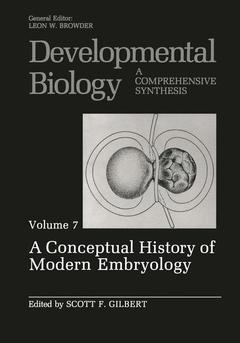"Glory to the science of embryology!" So Johannes Holtfreter closed his letter to this editor when he granted permission to publish his article in this volume. And glory there is: glory in the phenomenon of animals developing their complex morphologies from fertilized eggs, and glory in the efforts of a relatively small group of scientists to understand these wonderful events. Embryology is unique among the biological disciplines, for it denies the hegemony of the adult and sees value (indeed, more value) in the stages that lead up to the fully developed organism. It seeks the origin, and not merely the maintenance, of the body. And if embryology is the study of the embryo as seen over time, the history of embryology is a second-order derivative, seeing how the study of embryos changes over time. As Jane Oppenheimer pointed out, "Sci ence, like life itself, indeed like history, itself, is a historical phenomenon. It can build itself only out of its past. " Thus, there are several ways in which embryology and the history of embryology are similar. Each takes a current stage of a developing entity and seeks to explain the paths that brought it to its present condition. Indeed, embryology used to be called Entwicklungsgeschichte, the developmental history of the organism. Both embryology and its history interpret the interplay between internal factors and external agents in the causation of new processes and events.




